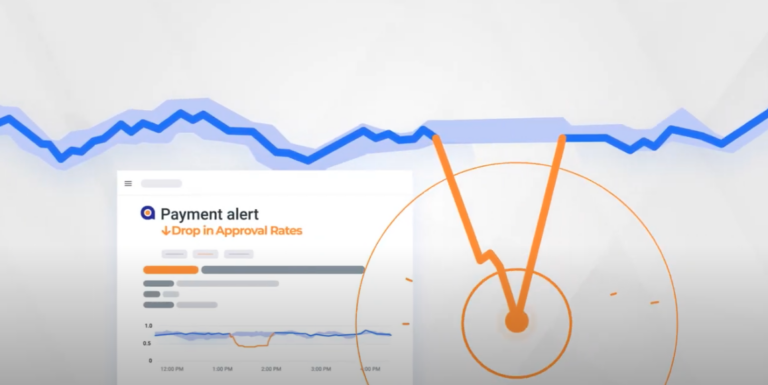Blog Post
5 min read
Do KPI Dashboards Provide Enough Value for Business Intelligence?
The State of KPI Dashboards for Business Intelligence
When they were first introduced, business intelligence (BI) KPI dashboards were intended to help provide continuous visibility into an enterprise’s performance, and thus optimize the analysis process of BI. Continuous visibility, however, is not the same as real-time intelligence. This has become increasingly and painfully clear to businesses over the years.
In our latest series of articles we’ve shown how dashboards have failed to deliver on their hype for many reasons:
Real actionable insights come from intelligently correlating many (often subtle) individual clues, which KPI dashboards are unable to do because they are designed to give a general overall picture.
In their goal to simplify the complex, business intelligence KPI dashboards are unable to present the granular data required to quickly get to the root cause of a KPI’s behavior, thus requiring analysis to occur in a separate tool. So much for the “single pane of glass”.
KPI dashboards are tools for visualizing the behavior of a metric, not for monitoring them. Since they require human eyeballs continuously glued to the screen, KPI dashboards are unable to automate the real-time discovery of the clues which can help you earn more revenue or decrease losses.
That’s just the tip of the iceberg.
KPI Dashboards for Business Intelligence: Delays, Costs, and More Costs
Traditional BI products which usually feature these dashboards are complicated platforms that require a heavy investment of time and money to implement, resulting in a long time to value. When you buy one of these tools, you’re not getting a turnkey solution, but rather a down payment on a large IT project which frequently blows past deadlines and budgets.
Even if you’re lucky and actually get one of these solutions up and running, the costs – and delays – keep coming. That’s because those KPI dashboards for business intelligence don’t continuously feed on a stream of real-time data, but on reports and tables generated by IT. This increases business latency and kills real-time decision-making. Without real-time data, profit-damaging business incidents come and go days before you’re even aware of them.
Do you want to avoid the lag due to waiting for the reports? Be ready to pay more for additional custom integration. These integrations add a whole new layer of labor costs, further pushing out the already long time to value. The additional expenses include the time of your CDO, CTO, data scientists with enough experience to do this integration completely, and often additional programmers, data analysts, and decision-makers. Your only alternative to these hefty one-time integration costs is often a continuous subscription with a middle man like Zapier for the connectors you need.
Even for the business events those dashboards are able to catch, only skilled analysis can deliver an explanation for why a particular KPI changed the way it did. Not everyone who relies on the BI dashboard is a skilled data scientists capable of performing that sleuthing. Truth be told, those KPI dashboards require sleuthing even before they’re created. This is because every dashboard first needs to be designed, and that design begins with knowing what questions you want to be answered. This is of course completely useless when you are looking for unknown unknowns.
Since, by design, business intelligence KPI dashboards visualize only a small subset of a company’s important metrics, some KPIs will inevitably be left out if they don’t match all the criteria you currently think are important. Since the dashboard, and the analysts using them, can’t see every metric, picking the wrong KPIs is a very real risk. No choice of chart types, colors or text options will be able to highlight signals in data you’re not collecting. Correcting for this early mistake in the dashboard design is time-consuming and costly since any new KPIs need new data to be gathered, new reports run, a chart type chosen, etc.
With all of these built-in delays and latencies inherent in KPI dashboards, is it any surprise that the BI adoption rate among employees was only 30% in Gartner’s 2017 survey? Unsurprisingly, a solution that is unable to deliver high-velocity business intelligence is also unable to drive rapid adoption.
AI Analytics Drives Past Business Intelligence KPI Dashboards
If KPI dashboards for business intelligence have so many problems, why are companies still using them?
Slick visualizations hypnotize users to the point where they miss the big picture. When staring at data they become blinded by information and miss the obvious. These tools give the illusion of transparency into business performance, but that transparency, if it comes at all, provides no value if it is not provided at the speed of your business in a way that makes the data insights truly actionable.
AI analytics, however, can deliver actionable insights in real time. With built-in data science, this new breed of solutions uses powerful machine learning algorithms to accurately and automatically detect anomalies in every time series metric—not just a few KPIs. AI analytics also automatically correlates and combines related anomalies, giving your analysts all the clues they need to respond to business incidents like third-party API breakage, a pricing glitch, or a surge in product orders. These are the types of rapid-fire events every modern company needs to manage and those which do so successfully have long left cumbersome KPI dashboards behind.
Read more









